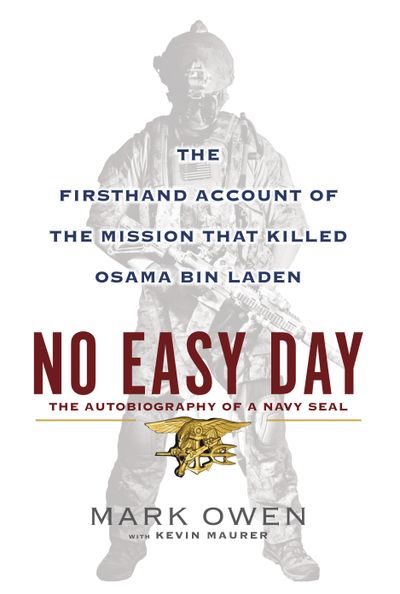Participant’s view of bin Laden raid offered in book
Navy SEAL says team caught up to terrorist in darkened hallway

WASHINGTON – A Navy SEAL’s firsthand account of the raid that killed Osama bin Laden pulls back the veil on the secret operations conducted almost nightly by elite American forces against terrorist suspects.
Former SEAL Matt Bissonnette’s account contradicted in key details the account of the raid presented by administration officials in the days after the May 2011 raid in Abbotabad, Pakistan, that killed the al-Qaida leader, and raised questions about whether the SEALs followed to the letter the order to only use deadly force if they deemed him a threat.
Bissonnette wrote that the SEALs spotted bin Laden at the top of a darkened hallway and shot him in the head even though they could not tell whether he was armed. Administration officials have described the SEALs shooting bin Laden only after he ducked back into a bedroom because they assumed he might be reaching for a weapon.
Military experts said Wednesday that if Bissonnette’s recollection is accurate, the SEALS made the right call to open fire on the terrorist mastermind who had plenty of time to reach for a weapon or explosives as they made their way up to the third level of the house where he hid.
Bissonnette wrote the book, “No Easy Day,” under the pseudonym Mark Owen as one of the men in the room when they killed bin Laden.
For years, the primary weapon in the war on terror has been unmanned drones firing missiles from the sky. But the Bissonnette book reveals a more bloody war waged by special operators, one the public almost never gets to see close up.
The book offers intimate details of a special operations mission. The most memorable scenes are also the most human moments. Bissonnette describes one of the SEALs dressing the wounds of a woman who was shot when she lunged toward the SEALs. In another scene, a terrified mother clutches her child and a young girl identifies the dead man as Osama bin Laden, seemingly unaware of the significance of those words.
In that regard, the bin Laden raid seems destined to become an anachronism. Nearly every top al-Qaida figure killed by the United States since the 9/11 attacks has died in a remote-controlled strike by unmanned drone aircraft – their deaths seen back in Washington via high-definition video. An estimated 80 top terrorist leaders have been killed in places like Pakistan and Yemen, according to The Long War Journal.com, which tracks such airborne strikes.
Special operations troops often conduct raids similar to the bin Laden strike a dozen times a night in Afghanistan, and previously in Iraq, killing thousands of mostly mid- and lower-level terrorists. It’s all part of a war on terror that is winding down and giving way to the drone war outside traditional war zones, given the scheduled drawdown of most U.S. troops in Afghanistan by the end of 2014.
“No Easy Day” shows how routine such operations have become. But the public rarely hears about them. This raid to capture bin Laden, though, was historic.
The SEALS, according to Bissonnette’s description, were prepared as they had been in other raids for a gunfight in close quarters, which likely would last only a few seconds, with no margin for error. By the time the SEALs reached the top floor of bin Laden’s compound, roughly 15 minutes had passed, giving the terror leader adequate time to strap on a suicide vest or get a gun, he said.
Bissonnette says he was directly behind a point man going up the stairs in the pitch black hallway. Near the top, he said, he heard two silenced shots fired by the first SEAL into the hallway. He wrote that the point man had seen a man peeking out of a door on the right side of the hallway, but Bissonnette could not tell from his vantage point whether the bullets hit the target.
The author writes that the man ducked back into his bedroom and the SEALs followed, only to find him crumpled on the floor in a pool of blood with a hole visible on the right side of his head and two women wailing over his body. Once they wiped the blood off his face, they were convinced it was bin Laden.
Bissonnette says the point man pulled the two women out of the way and shoved them into a corner. He and the other SEALs trained their guns’ laser sights on bin Laden’s still-twitching body, shooting him several times until he lay motionless.
The SEALs later found two weapons stored by the doorway, untouched, the author said.
Bissonnette writes that during a pre-raid briefing, an administration lawyer told them that they were not on an assassination mission. According to Bissonnette, the lawyer said if bin Laden did not pose a threat, they should detain him.
“If they didn’t feel like there was a threat, they would have captured him,” co-author Kevin Maurer told the AP on Wednesday. “But from when they first hit the ground, all the way until they got to the third deck, they had encountered armed men, which made the use of force essential,” said Maurer, a former AP reporter.